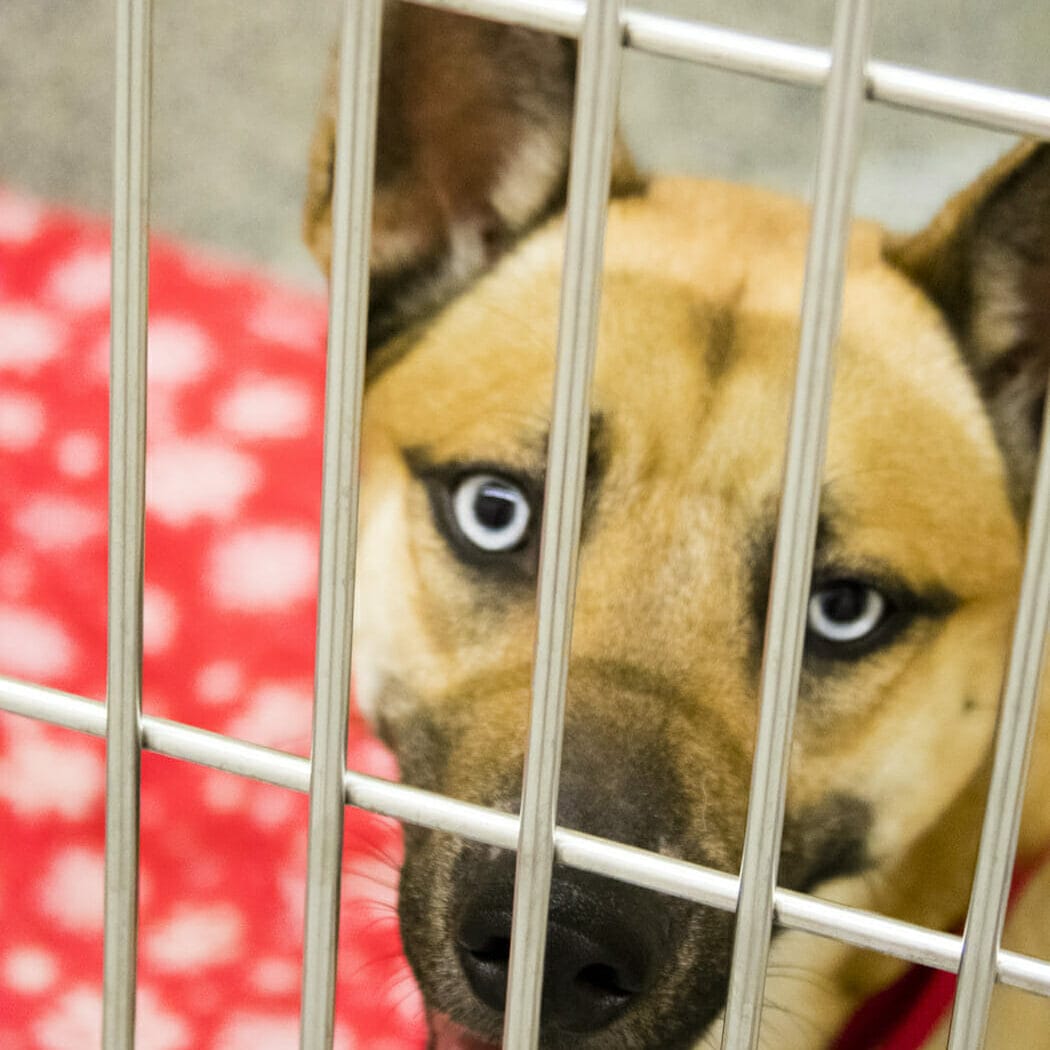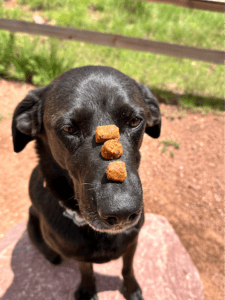Crate training can be a powerful tool for dog owners. It can help with house training, prevent destructive behavior, and provide a safe, secure place for your pet. While it can seem daunting at first, with the right approach, crate training can be a straightforward process. Here are 11 crate training tips to help make crate training a breeze.
1. Crate Training Tips: Choose the Right Crate
Choosing the right crate for your new dog or puppy involves several key factors to ensure it’s a comfortable, safe, and effective tool for training and transportation. First and foremost, the crate should be the right size. Your dog or puppy should be able to stand, turn around, and lie down comfortably within it. It should not be too large, as it might not provide the sense of security that dogs often seek in a crate.
Then, consider the type of material you are looking for. Plastic crates are generally preferred for travel, while metal wire crates can offer better ventilation and visibility for home use. For dogs that tend to chew, robust materials are a must, which means thick plastic or metal may be necessary.
You should also consider the crate’s door placement and number of doors. Multiple doors can offer more flexibility in where you can place the crate at home. Most pet supply stores have a variety of options for you to choose from to crate train your dog or puppy.
2. Make the Crate Comfortable
Making your dog’s crate comfortable is key to encouraging your dog to see it as a safe and inviting space. Start with a soft, comfortable dog bed or blanket that fits well inside the crate. Familiar scents can also help, so consider including an old t-shirt or towel that smells like you. Since dogs are den animals, some dogs appreciate a crate cover to mimic their native environment, but make sure it doesn’t compromise ventilation.
Add a few safe chew toys for your dog to enjoy, but avoid toys that can pose a choking hazard. If your dog will be spending extended periods in the crate, consider attaching a water bottle to the crate walls. Regularly clean the crate to keep it fresh and inviting. Remember, the goal is to make the crate a positive place where your dog feels secure and content.
3. Introduce the Crate Gradually
Introducing the crate gradually to your dog, especially if they’re new to crate training, is crucial to building a positive association with it and avoiding inducing stress or fear. If the crate is introduced too abruptly, your dog may see it as a form of punishment or confinement, which can lead to resistance and negative behaviors.
A gradual introduction allows your dog to explore and get used to the crate at their own pace. Start by leaving the door open and encouraging your dog to explore the crate with treats or toys. You may find that if you sit quietly for a few minutes nearby the crate while your dog is being introduced to the crate, they feel more comfortable.
Over time, you can begin to close the door for a few minutes at a time, slowly increasing the duration. If you notice your dog is content, leave quietly to let them be. Always remember to give lots of praise and rewards for using the crate. By introducing the crate gradually, it becomes a safe and comfortable place for your dog, which is beneficial for crate training, transportation, and providing your dog with their own space, especially after play time when they’re feeling sleepy.
4. Feed Meals Inside the Crate
Feeding regular meals inside the crate can be an effective strategy to build positive associations with the crate for your dog. By doing this, the crate becomes associated with pleasant experiences and is perceived as a safe and rewarding place. It also creates routine and predictability, which dogs appreciate. Placing the food dish in the crate encourages your dog to enter voluntarily, reducing any fear or apprehension associated with the crate.
It can also help reduce food aggression, as the crate provides a secure, private space for eating. For puppies or dogs new to crate training, placing their meals in the crate can be an initial step to introduce them to the crate gradually and positively. Always remember to open the crate door immediately after mealtime during the initial stages of training to avoid causing fear.
5. Create a Positive Environment
Creating a positive environment in your dog’s crate is essential for successful crate training and fostering a sense of security and comfort for your dog. This involves making the crate a pleasant place to be and associating it with positive experiences. Place soft bedding inside the crate and include your dog’s favorite toys.
Always ensure that your dog’s time in the crate is stress-free. The goal is to have your dog view the crate as their safe haven, where they can relax and retreat when they need quiet time.
6. Crate Your Dog For Nap Times
Using the crate for nap times can be a beneficial part of your dog’s crate training and overall routine. It provides your dog with a quiet, secure place to rest without disturbance, promoting better sleep quality. This is particularly helpful for puppies or high-energy dogs that need encouragement to take restful breaks.
Associating the crate with nap times helps your dog view the crate as a safe and comfortable space, reinforcing positive associations. It also creates a consistent routine, which can help puppies during housetraining, as they naturally avoid soiling their sleeping area. Remember to balance crate time with plenty of exercise and interaction outside the crate to ensure your dog’s physical and mental wellbeing.
7. Don’t Use the Crate as Punishment
Using the crate as a form of punishment is strongly discouraged because it can create negative associations and induce stress and fear in your dog. The goal of crate training is to provide your dog with a safe, comfortable space where they feel secure and at ease. If the crate is used for punishment, your dog may begin to associate it with negative experiences, which can lead to reluctance or outright refusal to enter the crate and potential behavioral issues.
Using the crate as a form of punishment can erode the trust between you and your pet, undermining the overall training process. Instead, positive reinforcement should be used to encourage desired behaviors, and the crate should remain a positive, welcoming space for your dog at all times.
8. Keep the Crate in a Social Area
Keeping the crate in a social area where your family spends the most time is important to prevent your dog from feeling isolated or excluded, as dogs are inherently social animals. This allows your dog to retreat to the crate whenever they need rest or a break while still feeling a part of the family’s activities. It provides a balance of social interaction and personal space, which can be beneficial for your dog’s mental well-being.
Having the crate in a social area, like the family room, also enables you to keep an eye on your pet when they are in the crate, ensuring they are safe and comfortable. However, it’s important that the area isn’t too noisy or hectic, as the crate should still provide a calm and peaceful environment for rest. Always ensure that family members and guests respect your dog’s crate time to maintain it as a positive and stress-free space.
9. Gradually Increase Crate Time
Gradually increasing crate time is a key component of successful and humane crate training. Just as humans need time to adjust to new situations, so do our dogs. If you introduce your dog to the crate and then immediately expect them to stay in there for longer periods, it could cause them to hate the crate rather than see it as a place to relax.
Instead, place your dog in the crate for short periods and gradually increase the time your dog spends in the crate. This gives your dog the chance to get used to the new environment, to understand that you will return and let them out, and to learn that the crate is an area all their own. Eventually, when you put your dog in the crate, they will see it as some time to relax themselves, and you may even notice they enter it whenever they’re feeling overwhelmed.
10. Create a Crate Routine to Train Your Dog
Creating a crate routine helps your dog understand what to expect and provides them with a sense of security. Start by introducing your dog to the crate gradually. Once they’re comfortable entering the dog crate voluntarily, you can begin incorporating it into their daily routine.
Keep in mind that your dog’s age could affect the amount of time it takes them to get used to the new routine. It can be particularly difficult for older dogs to get accustomed to the crate, so they may take more time than the new puppy you once brought home.
11. Be Patient While Introducing Your Dog to the Crate
Patience is key when it comes to crate training your dog, as it’s a process that involves developing a new habit and comfort level in a previously unfamiliar environment. Every dog is unique in their temperament, experiences, and rate at which they adjust to new circumstances. Some dogs might take to the crate immediately, while others may need more time to become comfortable.
How Can CBD Be Used During The Crate Training Process?
CBD, or cannabidiol, has been shown to have a calming effect on nerves and can be used as a tool during crate training to reduce hyperactivity and promote relaxation. If your dog is having a hard time adjusting to the crate, full spectrum hemp extract may support normal emotional balance.
Full spectrum hemp extract can be administered in various forms, including CBD oil or CBD chews, ideally about 30 minutes before your dog is expected to enter the dog crate. It’s important to note that CBD should not be the sole solution for crate training but rather a tool used in conjunction with positive reinforcement and gradual acclimation.
For further reading, we recommend:
- https://www.ncbi.nlm.nih.gov/pmc/articles/PMC6326553/#:~:text=At%20the%20first%20monthly%20assessment,in%20anxiety%20and%20sleep%2C%20respectively.
- https://www.vet.cornell.edu/departments-centers-and-institutes/riney-canine-health-center/canine-health-information/cbd-what-you-need-know-about-its-uses-and-efficacy
- https://www.ncbi.nlm.nih.gov/pmc/articles/PMC7537661/
You Might Also Enjoy
Understanding the differences between hemp vs CBD oil is important to produce the outcomes you’re…
The interest in natural options for promoting pet health has seen a significant rise, with…
Reactive dog barking may sound intimidating, but it’s important to differentiate it from dog aggression.…





